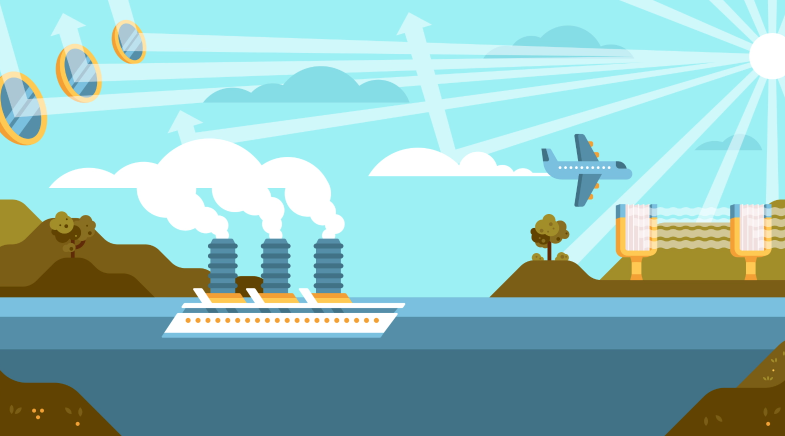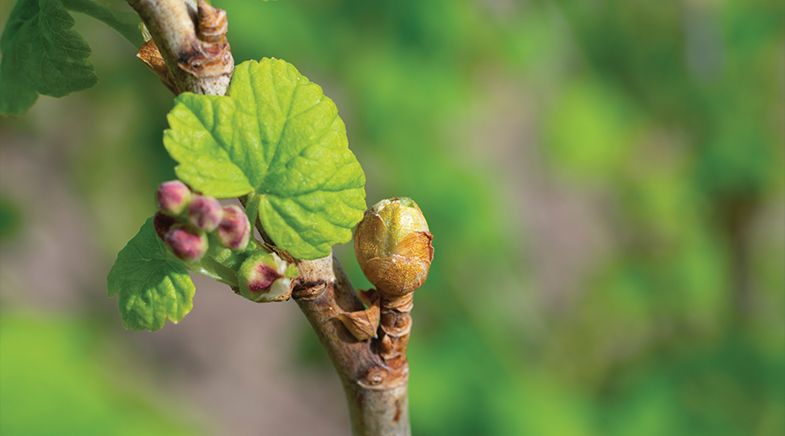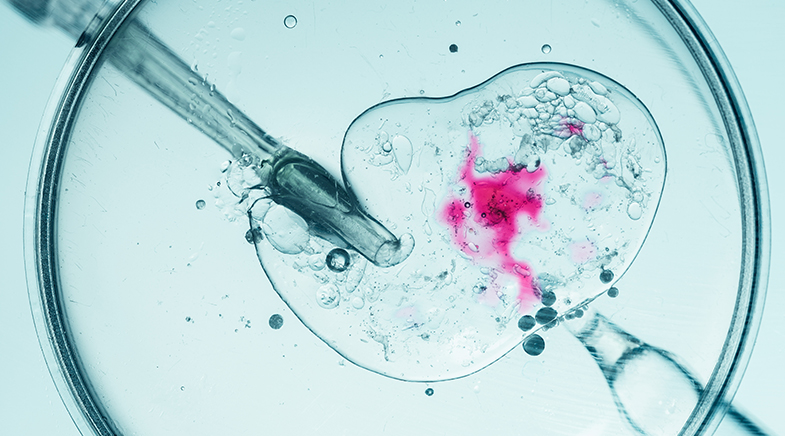The world's back-up plan to counter global warming
-
- from Shaastra :: vol 01 edition 03 :: Sep - Oct 2021

Geoengineering is a deliberate attempt to change the Earth's features on a global scale.
In 1896, Swedish physicist Svante Arrhenius published an article in the Philosophical Magazine, where he posited that atmospheric carbon dioxide absorbed heat and therefore warmed the Earth. It was a novel argument. Before him, although scientists knew that the atmosphere absorbed heat, they did not fully understand the mechanism of absorption. Arrhenius, a Nobel Prize winner credited with developing the branch of physical chemistry, was also the first scientist to quantify the contribution of carbon dioxide and water vapour to the greenhouse effect, which heats up the Earth.
Arrhenius had come to the problem as a way of understanding how the Earth warmed up after the ice ages. If carbon dioxide - which he called carbonic acid - helped the Earth get out of the ice ages (an assertion that was not true), it was logical to suppose that burning coal would increase the Earth's temperature over the centuries. Arrhenius thought that an increase in temperature would be a good thing, and that "we may hope to enjoy ages with more equitable and better climates". The more we burn coal, the faster we will achieve a balmy climate. Living in cold Sweden, Arrhenius didn't quite expect global warming to be a big problem.
Ideas about tinkering with the Earth's processes had originated long before Arrhenius. There were scientists who had proposed tampering with the weather but not on a global scale. For example, American meteorologist James Pollard Espy published a book called The Philosophy of Storms (1841), in which he claimed to have discovered methods to produce rain at will. It was not climate modification. Arrhenius was among the first scientists to propose deliberately toying with the Earth's climate for our comfort.
Current definitions of geoengineering do not consider Arrhenius's suggestion as an example of geoengineering, because fossil emissions and the consequent global warming are unintentional. As physicist David Keith, now at Harvard, explained in one of his papers in 2000, geoengineering is a deliberate attempt to change the Earth's features on a global scale. Both the intention and scale are important parts of the definition. Burning coal is not primarily aimed at changing temperatures. Experiments such as cloud seeding do not result in global change. Neither is, therefore, geoengineering. Curiously, the ability to modify weather was considered of strategic value by some policymakers. U.S. politicians feared a day when the Soviets would learn to control the weather before the American scientists did.
If there is a global climate emergency, spewing aerosols into the stratosphere will be the best way to cool it down.
Over the 20th century, as it became clear that global warming would become a serious problem, various people had proposed interfering with the Earth's climate system deliberately. Such suggestions were not taken seriously because even scientists had underestimated the extent of warming over the 21st century. When they realised that global warming would be catastrophic to life and the world economy, scientists started talking in whispers about geoengineering. It was not a topic that the community considered good for debate. Talking prematurely about geoengineering would get the world, many scientists argued, to become complacent and not cut fossil fuel use.
By the 1990s, things had begun to change. In a 1992 report called Policy Implications of Greenhouse Warming: Mitigation, Adaptation, and the Science Base, the U.S. National Academy of Sciences devoted a chapter to geoengineering. By the end of the century, scientists had begun to propose geoengineering projects for research and research papers had begun to be published with regularity. In 2009, Russian scientists did the first published field experiment in geoengineering, spraying aerosols in the stratosphere and measuring the radiation that passed through them. There is now widespread acceptance among scientists and policymakers that research into the topic is necessary because the world needs a back-up plan.

Geoengineering ideas are roughly classified into two categories: those to remove the carbon dioxide in the atmosphere and those that control their impact. The first category consists of a set of measures ranging from growing more trees to sucking carbon dioxide out of the air and burying it underground (see 'Cleaning up their act'). In the second category are proposals to reduce solar radiation hitting the Earth, most of them being ideas to reflect sunlight back into space before it heats up the atmosphere. Some scientists are reluctant to call the first category geoengineering; they consider it a safe "mitigation" option devoid of serious negative impacts.
Geoengineering is now mostly understood as solar radiation management, which means measures to reflect sunlight back into space. Some of the moves proposed in the last two decades are these: injecting tiny particles high in the stratosphere to reflect sunlight; creating more reflecting clouds by spraying sea water into the atmosphere; putting a shade in space that blocks sunlight; and dispersing cirrus clouds that block infrared radiation to space. Scientists have suggested painting buildings white - especially in cities - or building up foam on the sea surface, both of which would reflect sunlight back into space (see 'Geoengineering masks climate change problem').
The first category (removing carbon dioxide from the air) includes proposals to reduce ocean acidification by dissolving alkaline minerals in the ocean, which would in turn get more carbon dioxide from the air to dissolve in the oceans. Increasing the ocean biomass, by iron seeding to increase algal growth or cultivating seaweeds on a large scale, has been proposed as a way of fixing carbon dioxide. Australian scientists are trying to remove carbon dioxide by enhancing the weathering of the mineral olivine, which reacts with carbonic acid in the sea water through a set of reactions and sinks to the sea floor.
Among the second category, injecting reflective aerosols into the stratosphere is the most researched field for blocking radiation from the sun into the Earth. A small drop in radiation from the sun can have global consequences. Recent research suggests that a rapid drop in solar radiation may have caused the entire planet to be covered in ice around 700 million years ago, and that such drops can happen in the future. A drop in solar radiation is thought to be one of the causes of the ice ages, too. There has been speculation that the Earth is about to enter a mini-ice age because of low solar activity; scientists, however, have rejected that possibility.
Scientists believe that painting buildings white would reflect sunlight back into space.
Volcanic eruptions show that the technique of injecting reflective aerosols into the stratosphere works. Big eruptions throw up large amounts of aerosols and ash into the atmosphere. These linger in the air for a few years and cool the Earth. In 1815, Mount Tambora in Indonesia erupted and plunged the northern hemisphere into long-lasting wintry conditions, causing historians to dub it as the year without a summer. In 1991, Mount Pinatubo erupted in the Philippines and global temperatures plunged by 0.6° Celsius for a year and a half.
It is now widely accepted that blocking solar radiation through aerosol will work — and work quickly. If there is a global climate emergency, spewing aerosols into the stratosphere will be the best way to cool it down, while the world reduces carbon dioxide levels over decades. However, scientists need to understand the mechanism well. How much aerosol and how often? How can we do this without affecting the ozone layer? Computer simulations have given scientists deep insights into the effects of solar radiation management, but field experiments are the gold standard in science. Specifically, the physics of aerosols and chemistry of the atmosphere are not understood enough for the simulations to work well.
BALLOON TRIAL ON THE ANVIL
Scientists have been planning several field experiments to gather data and improve their understanding. Harvard University scientists led by physicist Keith, a longtime proponent of geoengineering research, had planned an experiment called the Stratospheric Controlled Perturbation Experiment (SCoPEx), which would use a balloon at an altitude of about 20km to study how artificial aerosols injected into the stratosphere would affect the stratospheric chemistry. The first part of the experiment was just to test a balloon with a payload of 600 kilogram. If the balloon stays for a day in the thin atmosphere, Harvard will scatter 1.8 kilos of calcium carbonate particles and observe how they interact with each other chemical species.
The first part of the experiment was to happen last year, but had to be postponed because of the COVID-19 pandemic. The site of the experiment was then moved to Sweden, but it was cancelled due to public resistance. "Bill Gates wants to spray millions of tonnes of CHALK into the stratosphere to reflect sunlight and slow global warming," claimed a headline in the British paper Daily Mail. Bill Gates is only one of the 30-odd philanthropists who support Harvard's geoengineering research.
The date for the experiment is not specified, but it won't happen before next year. Scientists now have the onerous job of getting public support for their research.
Have a
story idea?
Tell us.
Do you have a recent research paper or an idea for a science/technology-themed article that you'd like to tell us about?
GET IN TOUCH














